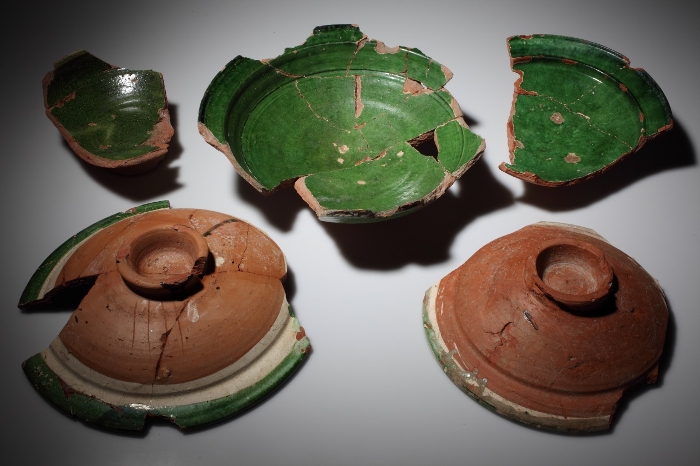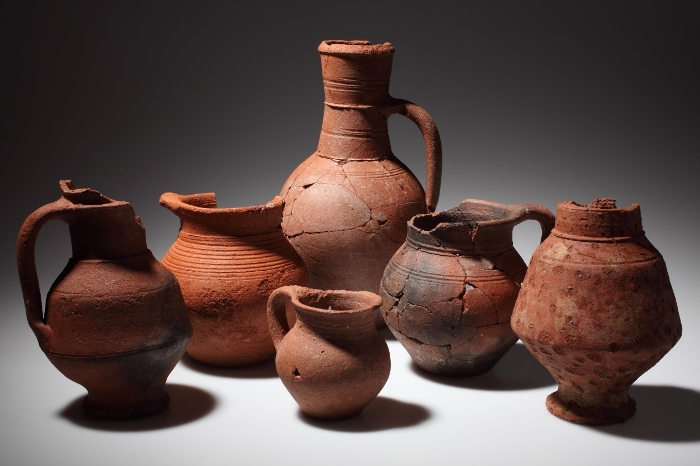Research project
Ephesus
Situated on the west coast of modern Turkey, the site of Ephesus is one of the largest excavations in Turkey and one of the most visited tourist attractions. Only one tenth of the city has been exposed until now although the Austrian Archaeological Institute in Vienna (ÖAI) has been excavating here for over a century. Standing ancient monuments include the reconstructed Library of Celsus, the Agora and the open-air theatre and parts of the Temple of Artemis, considered to be ‘one of the Seven Wonders of the World’.
- Duration
- 2010 - 2015
- Contact
- Joanita Vroom
- Funding
-
 Innovational Research Incentives Scheme VIDI - NWO
Innovational Research Incentives Scheme VIDI - NWO
- Partners
Österreichisches Archäologisches Institut (ÖAI), Vienna (AU)

New research reveals that Ephesus was continuously inhabited from Hellenistic to Ottoman times. In its last occupation phases the centre of habitation extended from the ancient city (situated near the harbour) towards the fortress on the Ayasoluk hill during the Early Byzantine period. The steep hill called Ayasoluk (‘Agios Theologos’) played an important role in the defense of the city and hosted a series of fortifications during Medieval and Post-Medieval times. It was also an area of religious significance and of pilgrimage, since both the seven-domed basilica of St. John and the Isa Bey Mosque can be found here. The fortress became, in particular, the seat of power during the Beylιk and Ottoman periods (ca. 14 th-18 th c.).
Research aims
The excavations in Ephesus by the Austrian Archaeological Institute since 1893 is testimony of a longstanding tradition and interest in the classical and antique world. The VIDI research project of Dr. J.A.C. Vroom collaborates with the Austrian Archaeological Institute in Vienna (ÖAI) for studying the later history and archaeology of Ephesus and exploring other periods in the life of this city - apart from the Roman era which has received much attention until recently. To understand the consequences of political changes in a local community, the Leiden team examines excavated finds (especially pottery, but also glass and metal) of the Byzantine, Medieval (or Beylιk) and Ottoman periods from different parts of the city. Among these are the recently excavated areas around the Artemis Temple, in the neighborhood of the Ayasoluk hill. As such, the team investigates cultural and economic exchange in the eastern Aegean throughout various periods.

The current study (executed by Dr Joanita Vroom and assisted by archaeology students from Leiden University) focus, for instance, on the material from four sites in Ephesus: the Artemis Temple, the Isa Bey Hamam, an anonymous Türbe (grave monument) and the so-called Tribüne (an ancient odeion). Excavations at these sites produced a considerable amount of material, which makes a long durée research-focus possible.
The excavations from 1998 to 2001 at the anonymous Türbe, a funerary monument south-east of the Artemis Temple, subverted the common assumption of a low populated region in the Byzantine period. The monument dates from the early 15th century and was erected cutting through several previous architectural structures: a cemetery with various graves, a Byzantine wall of two phases and a pottery kiln.
Some hundred meters further West lays the Tribune site. Here excavations from 2009 to 2011 revealed continuous habitation from Byzantine to Ottoman times. The function of the building in the Classical era was unknown prior to the excavations. The architectural lay-out is interpreted as an auditorium or mini-theatre, but during the Byzantine, Beylik and Ottoman periods the site seemed to be used as a residence or living quarters. Numerous fragments of table wares, glass vessels and metal objects were found in large quantities and of high quality, unrivalled for that time. Among the finds are sherds of blue-green Celadon bowls and dishes from China, Islamic fritware (stone-paste) with vegetal motives in blue and black paint, moulded ware often covered with a micaceous slip, incised monochrome and polychrome sgraffito wares, unglazed amphorae and cooking pots.

The documentation of the material from the Türbe is finished and awaits publication. The team continues to study the material of the Tribune and the Isa Bey Hamam in the next years. Besides a basic dating of the finds (including ceramics, glass and small finds), the project aims to analyse and revalue the current knowledge of pottery and ceramic assemblages from Byzantine to Ottoman times. Furthermore, the research includes spatial analyses of the finds within the rooms (architectural units) in the studied structures in order to shed light on the function of the separate spaces through time. The study so far has shown new pottery types, new local production sites and new patterns of trading networks.

Results & publications
Results from Ephesus have already been presented at specialised international conferences and will be published as peer-reviewed journal articles and as contributions to collective edited volumes within the ÖAI and ÖAW series.
Vroom, J. forthcoming, ‘Medieval Ephesus as a production and consumption centre’, in: P. Magdalino and S. Ladstätter (eds.), Ephesus from Late Antiquity to the Later Middle Ages, Leuven, Peeters.
Waksman, S.Y., Burlot, J., Böhlendorf Arslan, B. and Vroom, J. forthcoming, ‘Moulded wares production in the Early Turkish/Beylık period in Western Anatolia: A case study from Ephesus and Miletus’, in R. Tomber (ed.), Contextualising Science: Advances in Ceramic Production, Use and Function, Journal of Archaeological Science Reports
Vroom, J. 2009c, ‘A medieval pottery workshop in Ephesus/modern Selçuk (Turkey)’, in: J. Zozaya, M. Retuerce, M.A. Hervás and A. De Juan (eds .), Actas del VIII Congreso Internacional de Cerámica Medieval (Ciudad Real-Almagro, del 27 de febrero al 3 de marzo de 2006), Ciudad Real, Asociación Espaňola de Arqueología Medieval: 245-247.
Vroom J. 2005a, ‘Medieval pottery from the Artemision in Ephesus: Imports and locally produced wares’, in: F. Krinzinger (ed.), Spätantike und Mittelalterliche Keramik aus Ephesos (Österreichische Akademie der Wissenschaften, Philosophisch-Historische Klasse, Denkschriften, 332. Band), Vienna, Verlag der Österreichische Akademie der Wissenschaften: 17-49.
